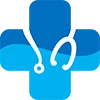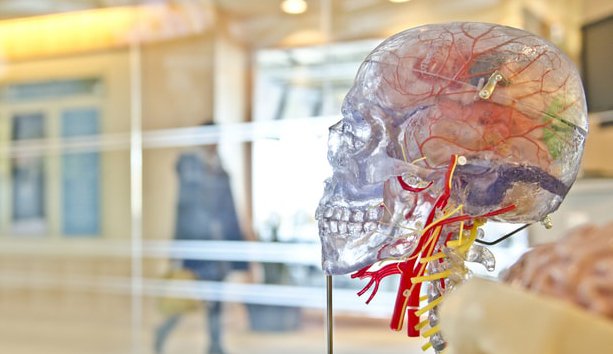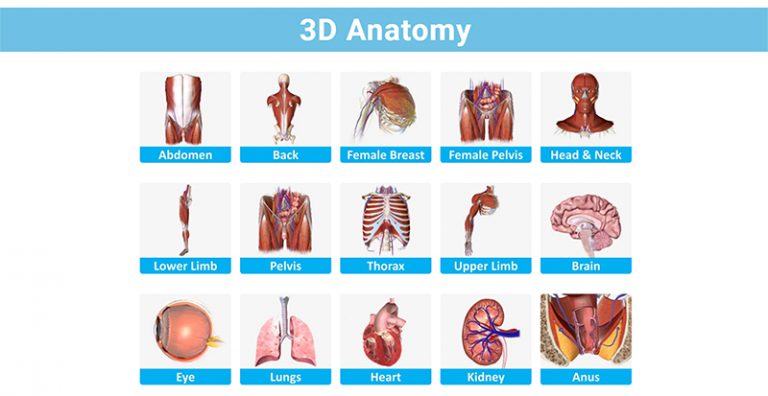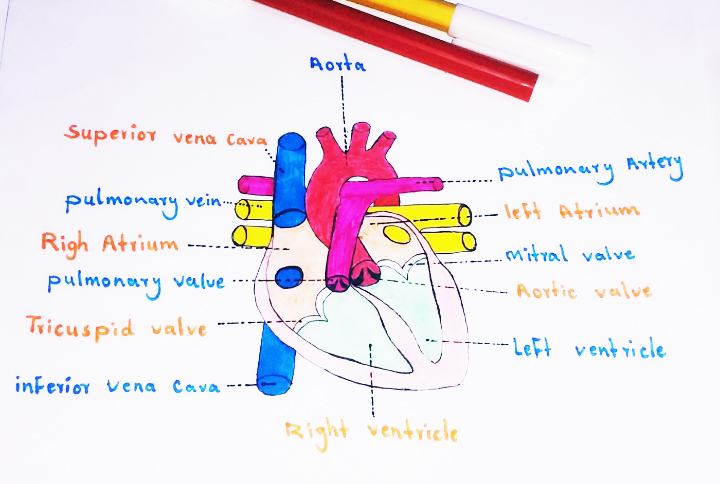- Newsletter
How to Study Anatomy?
What is Anatomy?
Human anatomy is the scientific study of the structure and function of the human body and its various systems, organs, tissues, and cells. It involves the analysis of the physical and biological structures of the body and how they work together to maintain health. Human anatomy deals with the anatomical structures of the human body, including cells, tissues, organs, and organ systems. Many courses will give an overview of cellular processes and tissue classifications, as well as an introduction to anatomical terminology. Students study the gross and microscopic anatomy of the neurological, musculoskeletal, circulatory, respiratory, digestive, integumentary, urinary, reproductive, immunological, lymphatic, and endocrine systems. Anatomy can be further divided into:
- Gross Anatomy – Study of large-scale anatomical structures
- Microscopic Anatomy – Study of microscopic anatomical structures
Studying human Anatomy includes a laboratory component that uses anatomical models, histology slides, skeletal materials, and cadaver demonstrations to demonstrate and reinforce anatomical concepts.
What are the branches of Anatomy?
Anatomy is divided into several branches of study, including:
- • Cardiovascular physiology: The functions of blood vessels and the heart
- • Cell biology: Cellular structure and functions
- • Developmental anatomy: The complete development of a person from conception to death
- • Embryology: The first eight weeks of development after the fertilization of a human egg
- • Endocrinology: Study of hormones and how they control functions of the body
- • Exercise physiology: Changes in organ and cell functions due to muscular activity
- • Gross anatomy: Structure of the human body and organs as a whole
- • Histology: Microscopic structure of cells, organs, and tissues
- • Imaging anatomy: Body structures seen with CT scans, MRI and X-rays
- • Immunology: Study of the body’s defenses against disease
- • Neurophysiology: Functional properties of nerve cells
- • Pathological anatomy: Structural changes related to disease
- • Phytotomy: Anatomical study of plants
- • Regional anatomy: Specific regions of the body such as the chest or head
- • Renal physiology: Kidney functions
- • Respiratory physiology: Functions of the lungs and air passageways
- • Surface anatomy: Surface markings of the body to understand internal anatomy through sight and touch
- • Systemic anatomy: Structure of specific systems of the human body such as the respiratory or nervous systems
- • Zootomy: Anatomical study of animals
How to Study Anatomy?
The first question pops up in every medical student’s mind when enter into medical school is “How to study human Anatomy quickly and efficiently?”
We’ve explained all of the most effective methods to cut your study time in half and retain more.
Anatomy is one of the difficult subjects, yet interesting subjects in medical school. Your knowledge in Anatomy will help you throughout your carrier, also one day it will be lifesaving.
So I’ll give you some tips to study Anatomy effectively in a short time and to score the highest marks in your exams.
1) Create an Anatomy Glossary
In medical school, learning anatomy is like learning a completely different language. Make an anatomy glossary that you can carry with you to help you learn and remember important anatomy terms. Gaining a better understanding of the general anatomical terminologies will help you feel more confident and improve your knowledge of anatomy.
2) Create a conducive environment for learning.
You can enhance your learning efficiency by creating a suitable learning environment. A productive outcome will be reached by a combination of effective time management, excellent reading, and note-taking abilities, drawing abilities, developing effective test-taking tactics, and your hard work. Identify all of your environmental distractions that interfere with your concentration. STARVE YOUR DISTRACTIONS, FEED YOUR FOCUS! That’s the key to success.
3) Find a good Anatomy Book with clear illustrations
This is a very important key in learning because you can’t understand the real human anatomy without a clear diagram. Just reading the text book has nearly ZERO impact, if you don’t go through clear anatomical illustrations. Grey’s Anatomy Books is one of the popular books used by students that gives you a clear idea in a simple way and it has beautiful illustrations too that aids more retention of knowledge. Other popular books :
- Grants Atlas of Anatomy
- Last’s Anatomy
- Ellis Clinical Anatomy
- Snell Clinical Anatomy by Regions
You can download more Anatomy Books on our website. Click here
4) Have a brief introduction in your mind
On the very first day of your semester, you should have a clear idea of the content that you are going to study. For Example, if you’re learning Anatomy of the Abdomen, you should have put a clear sketch on your mind that you’re going to study the Stomach, Liver, Pancreas, etc and the blood supply, nerve supply, histology, and embryology of each organ and the related clinical cases, etc. You can get ideas from your senior students to know the structure and contents of the chapter you’re going to study.
5) Use 3D anatomy tools
3D Anatomy software and 3D models will actually help you study Anatomy. For some topics, it’s probably much more useful than others. Muscle anatomy and anatomy of the brain are some topics that really need a 3D model to understand. You can move the structures in a three-dimensional plane and study Anatomy in medical school more effectively.
We’ve integrated some 3D structures on our website where you can study Anatomy on your smart devices for free.
6) Make your own notes
Make your own notes for each chapter. Because when you make notes, you gain more knowledge. Having a habit of taking short notes for each chapter will help you recall everything the night before exams. A combination of short notes and illustrations will help you learn Anatomy faster and easier.
7) Study actively
Studying Anatomy is not just like reading a storybook. Active study techniques are very important, especially when it comes to learning about human anatomy.
It takes so much of your time when you study a complicated subject like Anatomy. So you have to listen to your professor lecturing, use reading materials, books, illustrations, short notes and you’ll feel the anatomical models when you dissect a cadaver or using 3D models in your laboratories.
You can see clear dissection images here
There are several active study tips including flashcards, mnemonics, study cards, illustrations, and drawing books that can help you boost your anatomy knowledge.
8) Get Creative, Draw your own diagrams
This is a super effective method that boosts your Anatomy knowledge. After learning a structure, draw your own diagrams on your practice book or papers and label the structures. Use your artistic skills to help you study. So you’re unlikely to forget the structures easily to help you study Anatomy effectively in medical school.
9) Repetition
The more you learn, you’re more likely to forget many small facts and terminologies. So what you should need to keep everything that you’ve learned on your mind is to repeat what you’ve learned again and again. You can revise your notes daily, weekly, or monthly, but repetition is essential to sharpen your anatomy knowledge.
10) Memorization tactics
This method makes your learning easy. You can use various methods like Mnemonics, Flashcards, diagrams, charts etc.
For example, the Mnemonic “SCALP” can help you remember the anatomical layers of the scalp in order.
S – Skin,
C – Connective tissue,
A – Aponeurosis,
L – Loose connective tissue,
P – Periosteum
We’ve recently published a Medical MNEMONICS eBook that will help you greatly. This book is a combination of mnemonics in various subjects.
11) Understand your learning style
Figure out what learning style suits you well. Do 3D tools work for you? Are you a verbal learner? Most students are a combination of learning styles, so you have to figure out your suitable learning style to be more effective. Then maximize your study efforts in your own way to score high. If rewriting notes don’t work then don’t use them. If flash cards helps you remember, then do that!
12) Work in groups
Perhaps for some students working in groups can be of benefit. Sometimes having your friends to give you explanations or to quiz you or discussing the past papers can help you retain more and more. At the same time, having a group of friends for studies will keep you motivated to study. Peer teaching has been found in studies to be very effective in helping retain more material.
13) Stay motivated
This is very important. Because no one is going to push you. In a stressful course like medicine, there are a lot of things to be studied in a short period. So if you don’t motivate yourself then you will procrastinate. So find ways to motivate yourself to study. As mentioned earlier, try working with friends so you can motivate each other. Make a plan, put a timetable, and have your own motivation and self-discipline to study anatomy.
14) Quiz yourself
Test your knowledge again and again. You can make your own questions with your friends and quiz each other or use past papers or model papers provided by your institute or teachers. This is a must-do activity if you want to score high marks because you exactly know what you’re supposed to study.
15) Review your mistakes
Truth is, when you do self review and when you make a mistake, if you correct it by your reference materials then you’re very unlikely to forget it. So always pay extra attention to what you got wrong.
16) Take advantage of the resources available to you
There are actually a lot of resources available to you to make your studying endeavors easier. You should use all of the resources and combination of learning techniques to maximize your studying effectiveness and reinforce the concepts. You can take advantage of your textbooks, class handouts, reading materials, lab material your professor provides, Anatomy 3D Models and also there are many online resources that are accessible by students.
You can get access to our Medical Resources Library to get access to more than 300 medical presentations and all other medical resources that will be helpful for your entire career.
Summary
Human anatomy is difficult to learn and will take a significant amount of time and effort. As previously said, you should plan on studying anatomy for 10-12 hours each week outside of class, including weeks after breaks. Memorization, both visual (cadavers, 3D anatomical models, anatomical charts) and terminology, is a big part of human anatomy classes. A critical thinking component is also included, in which you must be able to identify a section of the anatomy based on clues. As previously said, repetition and the development of effective study techniques will set you up for success in learning human anatomy.
- Library





